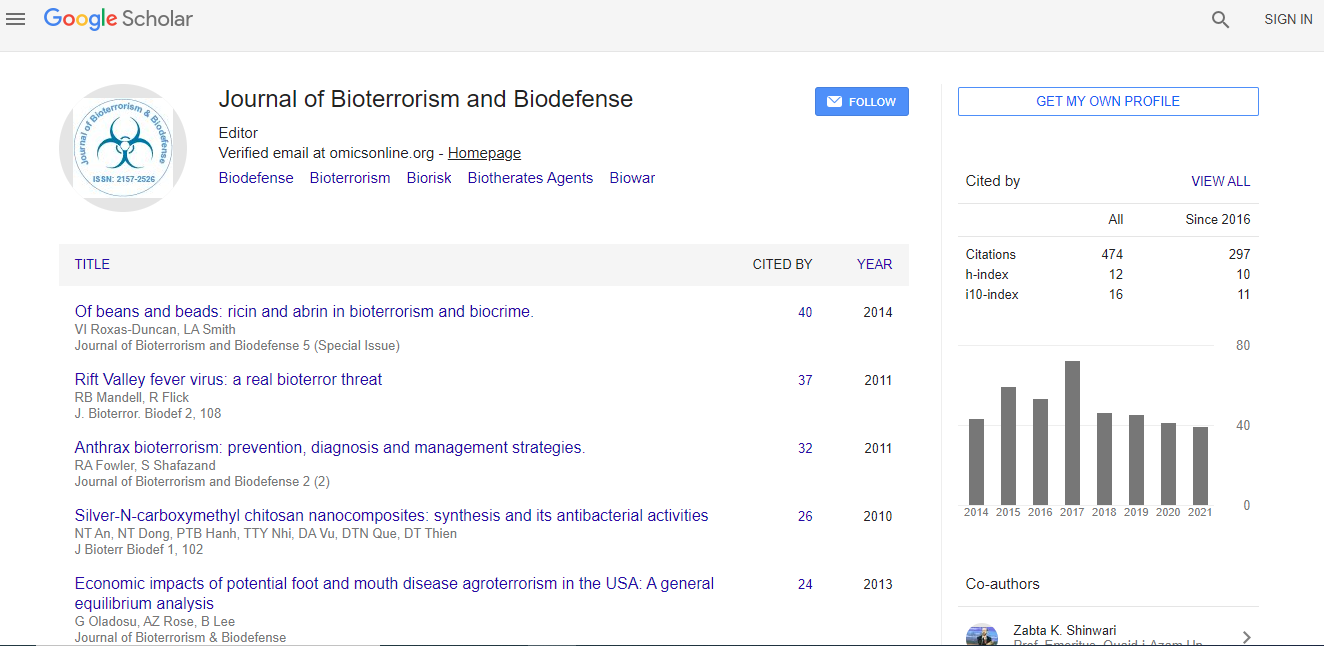Review Article
Integrating Immunobased Detection and Identification Methods for Ricin Analysis: An Overview
Payal Puri and Om Kumar*
Division of Pharmacology and Toxicology, Defence Research and Development Establishment, Jhansi Road, Gwalior, India
- *Corresponding Author:
- Om Kumar
Defence Research and
Development Establishment
Jhansi Road, Gwalior
Tel: +91-0751-2233489
E-mail: omkumar63@rediffmail.com
Received Date: September 22, 2011; Accepted Date: December 10, 2011; Published December 14, 2011
Citation: Puri P, Kumar O (2011) Integrating Immunobased Detection and Identification Methods for Ricin Analysis: An Overview. J Bioterr Biodef S2:007. doi: 10.4172/2157-2526.S2-007
Copyright: © 2011 Puri P, et al. This is an open-access article distributed under the terms of the Creative Commons Attribution License, which permits unrestricted use, distribution, and reproduction in any medium, provided the original author and source are credited.
Abstract
Ricin is one of the most potent naturally occuring toxins and is among the deadliest poisons available. It gained fame by its use in the so-called ‘umbrella murder’ to kill the Bulgarian dissident Georgi Markov in 1978. Ricin is considered as a potential bioterrorism agent due to its toxicity, easy availability of raw materials, inexpensive and simple production of large quantities, and an extensive history of use as a bioweapon. In addition, ricin is soluble in water and stable under heat and a wide pH range. Therefore, there is a potential for ricin to be intentionally added into food or water. For environmental detection in bioterrorism attack as well as for medical treatment purpose, there is a need for a rapid and sensitive detection and quantitation method on trace amount of ricin. This review gives an overview of the different detection methods available for ricin-a biothreat agent. The aim of this review is to give an overall picture of the past and present trend in the detection methodologies and to integrate them for ricin analysis. The objective of this paper is focused on the detection of ricin that might be used as a biological weapon.

 Spanish
Spanish  Chinese
Chinese  Russian
Russian  German
German  French
French  Japanese
Japanese  Portuguese
Portuguese  Hindi
Hindi 